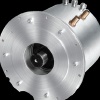Индустриален клъстер "Електромобили" - Учредители:








 |

|

|
| Актуално | За клъстера | Екип | Членове | Документи | Анализи | Услуги | Стани член | Награди | ССЕМ | Контакти |
ИКЕМ - Индустриален клъстер "Електромобили" | Понеделник, 19.01.2026 | |
|
Electric Vehicle Manufacturing: An Industry Study
1.0 Background Electric Vehicle Industry – Early History The electric vehicle industry can trace its roots back over 180 years. In the 1830’s, the first electric car was built in Scotland. It used a non-rechargeable battery and was essentially a horse-less carriage. By 1881, rechargeable lead-acid batteries had been developed which were practical for use in vehicles. Electric vehicles were so mainstream in 1887 that New York City had a fleet of electric taxis. By the turn of the century, 38% of cars in America were electric. They were a more practical car for the day as gasoline powered vehicles were dirty, noisy, and a rough ride. In addition, internal combustion engines had to be started with a hand crank. The 1902 Wood’s Phaeton was a typical car of the day, and had a range of 18 miles and top speed of 14 mph. It wasn’t until 1912, when the electric starter was invented, that internal combustion engines started to become more popular than the electric and steam powered cars. New oil discoveries in Oklahoma and Texas, infrastructure improvements allowing for longer trips, along with Henry Ford’s innovations in production all contributed to the eventual domination of gas powered vehicles. The electric vehicle never disappeared entirely, though its use was extremely limited. Unsurprisingly, the oil crisis in the 1970’s spurred the development of many EV concepts. Legislative efforts led by California in 1990 spurred development in a new way. Major auto manufacturers, including: Ford, Chrysler, Honda, Toyota and Nissan all started limited production of electric vehicles. The most famous of these was General Motors EV1. For a variety of reasons, including the repeal of regulations in California as a result of lobbying efforts by automakers, GM confiscated all of the EV1s and literally destroyed them. It was emblematic of the apparent sentiment of major automakers. Electric Vehicle Industry – Current Activity and Key Players Today, market conditions have motivated even the major auto manufacturers to invest in EV’s. Late 2010 saw the release of the Chevy Volt; a plug-in electric hybrid. 2011 has already seen the release of the all electric Nissan Leaf, and should see a counterpart by Ford enter the market by the end of the year. Within a few years, nearly all of the major auto manufacturers will market plug‐in hybrids or EVs. In addition to general market offerings, there is a wide variety of specialty vehicles such as the performance oriented all electric Tesla Roadster and the ultra‐narrow Tango EV commuter. At this point, no major players or technologies have emerged as leaders in the sector. The economics of manufacturing and purchasing EVs are still maturing. Federal and state incentives for purchase alleviate some of the relatively high cost of EVs. However, those incentives are designed to phase out after a manufacturer has sold 200,000 vehicles (“Consumer Energy Tax Incentives,” n.d.). Conversely, pricing of EVs should drop as efficiencies of scale take hold. This is particularly true for the most expensive part of the vehicle: the battery (Kanellos, 2010). Fuel prices and the effect on the total cost of owning an EV will be a major factor in EV adoption. 2.0 Industry Trends The electric vehicle manufacturing industry is comprised of two categories of manufacturers: those that only produce EVs and those that produce both internal combustion engine (ICE) and EVs. Manufacturers that exclusively make EVs (one to two models at most) are relatively small in size. The most well known player in this category is Tesla Motors, although there are others such as Coda Automotive and Th!nk City. The majority of these electric only manufacturers are low volume or limited run production operations. The other category consists of large, traditional automobile manufacturers who have also begun to offer EVs. The front runners in this category are Nissan, with the all electric Leaf and Chevy, with the electric-ICE hybrid Volt. Given the breakdown of the two major players we will look at trends affecting the larger automotive industry and trends that are specific to electric vehicle manufacturing. Automotive Industry Trends The most significant trend affecting the auto industry is rising and volatile gasoline prices. Gasoline prices have increased, on average, over a dollar a gallon from the same time last year. |
Продукти 
Комплектна система за задвижване на електромобилиСистемата за електрозадвижване обхваща гама с три основни типоразмера на ел. мощност със съответните компоненти - електромотор и контролер. oще ...Виж всички продуктиАнкета с продължение...
|
|
|
 ЕВРОПЕЙСКИ СЪЮЗ Европейски фонд за регионално развитие Инвестираме във вашето бъдеще |
 |
 ОПЕРАТИВНА ПРОГРАМА „Развитие на конкурентоспособността на българската икономика” 2007-2013 www.opcompetitiveness.bg |
|
Интернет страницата е създадена с финансовата подкрепа на ЕФРР, в рамките на проект „Развитие на Индустриален Клъстер Електромобили” по ДБФП К-02-2/28.09.2011 г. |
|||